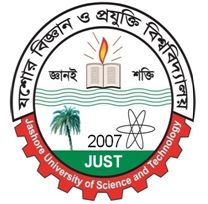Study on Solutions of Heat Transfer Equation and Their Applications to Fluid Flow through the Curved Channel
Semester: third
Session: 2020-2021
Pages:
Publication: MS Project Thesis
Published On: 13 October 2023
The study of heat transfer equations and fluid flow through a curved channel is a captivating and multidisciplinary field at the intersection of thermodynamics, fluid dynamics, and engineering. This area of research explores the intricate dynamics of heat exchange and fluid movement within channels or conduits with non-linear geometries, such as curves or bends. This study presents a comprehensive numerical analysis of the heat equation, exploring its responses to diverse initial conditions and boundary conditions. Through advanced computational techniques, various scenarios are examined, resulting in distinct temperature profiles and temperature contours. Beyond heat transfer, this research extends to the creation and control of vortices within the thermal domain. By systematically investigating these complex interactions, this work contributes to a deeper understanding of thermal phenomena and the dynamic emergence of vortices. These insights offer valuable applications in areas such as fluid dynamics, engineering, and environmental science, where the precise modeling and manipulation of temperature fields and vortices are essential for optimizing processes and achieving desired outcomes. A numerical study is conducted on the fully developed two-dimensional flow of an incompressible viscous fluid in a curved rectangular rotating curved duct of several curvature such as . The fully developed two-dimensional flow through a rectangular curve duct is simulated to use a spectral-based numerical method. The flow controlling parameters are characterized for different cases, the Grashof number (
), the Taylor number (
), the Prandtl number (
) and the Dean number (
). The primary flow controlling parameters are the rotational parameter i.e., the Taylor number
and the Grashof number
. The other parameters are the Prandtl number
, the pressure-driven parameter i.e., the Dean number
. The rotation of the duct about the center of curvature is imposed in the positive direction and effects of the centrifugal, Coriolis and buoyancy forces are investigated, in detail, for the four cases of the Grashof numbers, Case I: Gr=0, Case II: Gr=1000, Case III: Gr=3000, and Case IV: Gr=6000. For the flow characteristics through a rotating rectangular duct. For positive rotation, we investigated chaotic, periodic, multi-periodic and steady solutions for
, where
is fixed for each case. At different values of Tr, typical contours of secondary flow patterns and temperature distributions are determined, and it is found that the unsteady flow is completely invented of asymmetric two to eight vortex solutions.
In this study, we first investigated a vortex structure analysis and then used this vortex to contribute to heat transfer in the computational domain. The secondary vortices are used to show how convective flow is distributed and affected by the other flow-controlling parameters. If we increase the value of Tr, it is found that chaotic, periodic, multi-periodic, steady solution for higher speed of the duct. This study also demonstrates the significant connection between the Centrifugal-Coriolis instability in the curved channel and the heating-induced buoyant force, which promotes fluid mixing and therefore improves heat transmission in the fluid.
